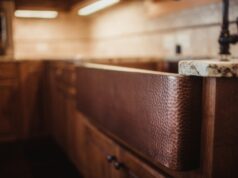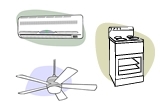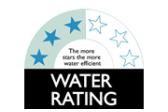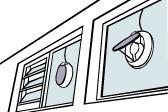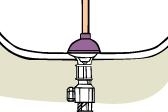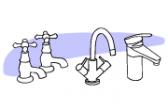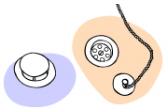Wiring for larger appliances
While smaller appliances can be casually plugged in where they fit and moved around, larger 'roughed in' appliances like ovens will often need to...
Kitchen floors
Kitchen floors need to be able to take quite a beating - but they also need to be forgiving on your feet, knees and...
Distance between water and power points
Regulations in Australia restrict the placement of power points in relation to sinks and taps. This article explores what the rules say and how far your power points will need to be from your kitchen sink.
WaterMark labels
The WaterMark certification label signifies that a plumbing product complies with certain quality and performance standards.
WaterMark logos are either etched or printed on compliant...
WELS labels and ratings
Water-producing bathroom fittings in Australia need to comply with basic water-efficiency standards. As a part of the WELS scheme, they are rated and given...
Exhaust fans: size, speed and throughput
The size and speed of an exhaust fan can have an impact on its performance, but to choose a fan you also need to...
Exhaust fans
Kitchens and bathrooms can become very steamy and stuffy, and powered ventilation fans are an excellent way of providing fast, effective ventilation to these...
How to unblock a drain
Blocked drains in your kitchen are no fun - but thankfully they're not too difficult to deal with. Read our guide on how to...
Types and styles of taps
Taps can come in matching bathroom sets, but can also be mixed and matched to great effect.
Picking the right taps for your home may...
Traps, drains and wastes
Also called drains and plugholes, wastes are the grills through which water is drained as it leaves your bathroom. Find out what variations exist...


